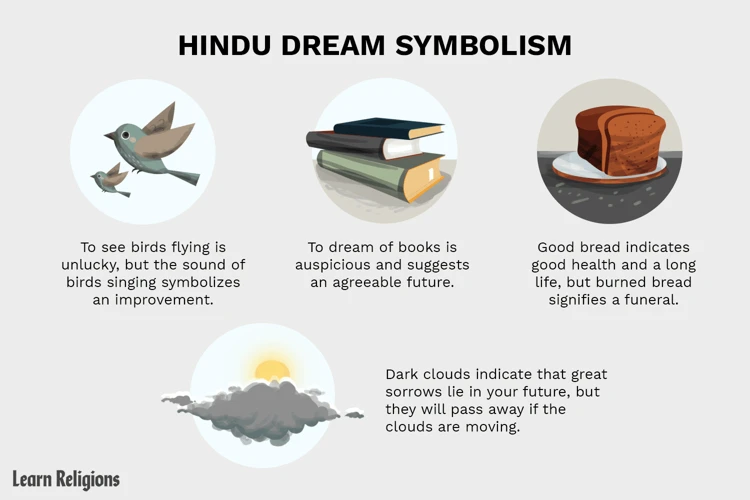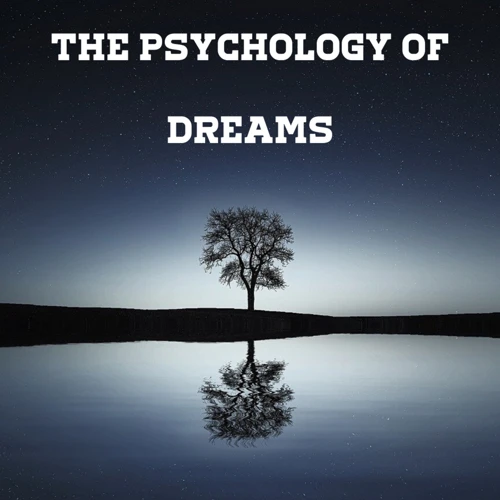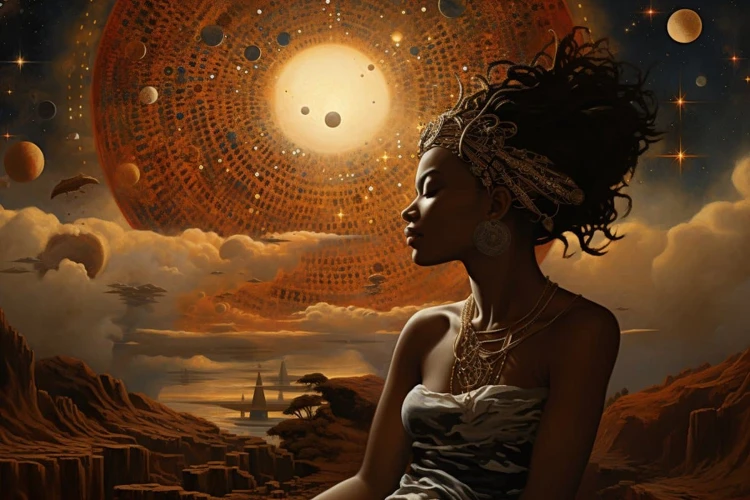From the haunting visuals to the immersive soundtrack, “Requiem for a Dream” is a film that leaves viewers pondering its deeper meanings long after the credits roll. Directed by Darren Aronofsky, this psychological drama delves into the lives of four individuals as they navigate the perils of addiction and the search for fulfillment. Through its intricate symbolism and thought-provoking narrative, the film takes us on a journey through the human psyche, the impact of society, and the power of sound and music. Prepare to unravel the layers of meaning as we decode the symbolism behind “Requiem for a Dream.”
The Storyline

The Storyline of “Requiem for a Dream” takes us on a dark and captivating journey. The film follows the lives of four main characters: Harry Goldfarb, his girlfriend Marion Silver, his best friend Tyrone Love, and Harry’s mother Sara Goldfarb. Each character is driven by their own desires and dreams, leading them on a path of self-destruction. As the story unfolds, we witness their relentless pursuit of happiness, their descent into addiction, and the devastating consequences that await them. Their stories intertwine, painting a vivid portrait of the human condition and the desperate lengths individuals will go to fulfill their deepest desires. Through its gripping narrative, “Requiem for a Dream” forces us to confront the harsh realities of addiction and the fragility of our dreams.
Symbols and Metaphors

In “Requiem for a Dream,” symbols and metaphors play a vital role in conveying deeper meanings and enhancing the film’s impact. One significant symbol is the red dress worn by Marion, which represents her longing for love and escape from her troubled reality. It symbolizes her desire for a glamorous life, but ultimately becomes a source of both pleasure and pain. Another powerful symbol is the television, which serves as a metaphor for the characters’ need for distraction and escape from their harsh realities. It reflects their obsession with illusions and the temptation to retreat into a world of fantasy. Additionally, the dream sequences provide a glimpse into the characters’ aspirations, showcasing their hopes and desires and contrasting them with the harsh realities they face. The use of symbols and metaphors in “Requiem for a Dream” adds depth and complexity to the narrative, inviting viewers to explore the layers of meaning and contemplate the human condition.
The Red Dress
– The Red Dress in “Requiem for a Dream” serves as a powerful symbol throughout the film. It represents the unattainable and elusive dreams of the characters, particularly for Marion. The vibrant red color symbolizes passion, desire, and temptation. Marion, who dreams of becoming a successful fashion designer, sees the red dress as a manifestation of her aspirations and the glamorous life she longs for. However, the dress remains just out of reach, mirroring the characters’ unfulfilled dreams and the destructive path they find themselves on. It emphasizes the gap between their aspirations and their reality, serving as a constant reminder of the unattainable nature of their dreams and the ultimately destructive consequences of their pursuits.
The Television
“The Television” serves as a powerful symbol in “Requiem for a Dream.” Throughout the film, the television represents both escapism and disconnection from reality. It is depicted as a constant presence in the characters’ lives, providing an avenue to numb their pain and avoid facing their problems. The characters often find solace in the TV, using it as a means to distract themselves from their struggles and escape the harsh realities they face. However, as the story progresses, the television becomes a source of obsession and addiction, driving the characters further into their downward spirals. It symbolizes the allure of a false reality, highlighting the dangers of seeking fulfillment through external distractions rather than confronting the truth. Ultimately, the television in “Requiem for a Dream” serves as a reminder of the consequences of avoiding reality and the destructive nature of excessive escapism.
The Dream Sequence
In “Requiem for a Dream,” the Dream Sequence serves as a powerful symbolic representation of the characters’ hopes, desires, and illusions. Through the use of surreal, fragmented imagery, director Darren Aronofsky takes us deep into the subconscious minds of the characters, capturing their inner turmoil and aspirations. These sequences are filled with vivid colors, quick cuts, and distorted visuals, mirroring the chaotic and distorted nature of addiction. The Dream Sequence acts as a stark contrast to the grim reality the characters face, providing glimpses of their deepest desires and the fleeting moments of happiness they crave. It serves as a reminder of the allure and allurements of their dreams, while also highlighting the dangerous disconnect between fantasy and reality.
Depiction of Addiction

The depiction of addiction in “Requiem for a Dream” is poignant and harrowing. The film explores the insidious nature of addiction, showcasing how it can consume and destroy lives. At its core, addiction is portrayed as a relentless pursuit of happiness and fulfillment. Each character in the story becomes ensnared in their own personal vices, whether it be drugs or the allure of fame. Their initial hopes and dreams gradually give way to a downward spiral of desperation, isolation, and loss. Through its raw and unflinching portrayal of addiction, “Requiem for a Dream” serves as a stark reminder of the destructive power addiction holds over individuals, and the devastating consequences it can have on their lives and relationships.
The Pursuit of Happiness
- In “Requiem for a Dream”, the pursuit of happiness is a central theme that drives the characters’ actions.
- Harry and Marion dream of a better life and believe that happiness lies in material wealth and success.
- This pursuit leads them down a dangerous path, as they become engulfed in a world of drugs and addiction.
- They are willing to do whatever it takes to achieve their dreams, even if it means sacrificing their own well-being.
- However, as the story unfolds, it becomes clear that their pursuit of happiness is ultimately futile and destructive.
- Their dreams and aspirations crumble beneath the weight of their addiction, leaving them trapped in a cycle of despair.
- “Requiem for a Dream” serves as a cautionary tale, reminding us of the dangers of prioritizing material wealth and external validation over true happiness and fulfillment.
The Downward Spiral
“The Downward Spiral” in “Requiem for a Dream” is a central theme that explores the consequences of addiction. As the characters become entangled in their own vices, we witness their lives spiral out of control. Harry, Marion, Tyrone, and Sara all find themselves trapped in a cycle of self-destruction, unable to break free from the clutches of their cravings. The film skillfully portrays the devastating effects of addiction, as their dreams and aspirations crumble under the weight of their substance abuse. With each passing scene, the downward spiral intensifies, leaving no room for redemption. As viewers, we are confronted with the harsh reality of the characters’ choices and the profound impact it has on their lives.
Exploring the Human Psyche

In “Requiem for a Dream,” the exploration of the human psyche is a central theme that captivates viewers. Through its characters and their experiences, the film delves into the complexities of identity and the profound impact that addiction can have on one’s sense of self. Harry, Marion, Tyrone, and Sara each grapple with their own unique struggles, searching for meaning and connection in a world that seems determined to push them further into isolation. Their descent into addiction exposes the fragile nature of the human psyche, as they lose touch with their true selves and become consumed by their destructive desires. The film’s portrayal of the human psyche serves as a poignant reminder of the toll that addiction can take on both the individual and those around them, leaving a lasting impact on the audience and provoking introspection about our own inner workings.
The Search for Identity
In “Requiem for a Dream,” the theme of The Search for Identity plays a significant role in the narrative. Each character grapples with their own sense of self and struggles to define who they truly are. Harry seeks validation and success through his drug dealing, while Marion seeks self-worth through her artistic pursuits. Tyrone yearns to escape the cycle of poverty and make a name for himself, while Sara desperately clings to her hope of reclaiming her youth. Their individual quests for identity ultimately lead them down destructive paths, highlighting the dangers of losing oneself in the pursuit of external validation. The film serves as a cautionary tale, emphasizing the importance of staying true to one’s authentic self and finding genuine fulfillment rather than relying on external factors for validation.
Loss of Connection
In “Requiem for a Dream”, the theme of Loss of Connection is explored as a profound aspect of the human condition. Throughout the film, we witness various characters grappling with an overwhelming sense of isolation and detachment. Harry and Marion, deeply in love, find themselves drifting apart due to their spiraling addictions. The once close-knit relationship between Harry and his mother Sara deteriorates as she becomes consumed by her obsession with appearing on a television show. Tyrone, too, experiences a loss of connection, feeling alienated by society and struggling to find a sense of belonging. These characters’ disconnections highlight the devastating effects of addiction and the profound loneliness that can arise when meaningful connections are severed. Through the portrayal of loss of connection, “Requiem for a Dream” forces us to reflect on the importance of human relationships and the dire consequences when they are fractured.
The Impact of Society

“The Impact of Society” is a central theme in “Requiem for a Dream”. The film explores how societal pressures and expectations can shape and ultimately destroy individuals. We see this through the character of Sara Goldfarb, who becomes consumed by her quest for validation and acceptance. Society’s obsession with beauty and youth drives her to extreme measures, leading to her descent into addiction and madness. Additionally, the film portrays the disconnection between individuals caused by societal norms. Harry, Marion, and Tyrone all struggle to find a sense of belonging and connection in a world that often feels cold and indifferent. Through these portrayals, “Requiem for a Dream” highlights the destructive consequences that societal pressures can have on individuals and their relationships.
The Power of Sound and Music
The Power of Sound and Music in “Requiem for a Dream” is undeniable. The film’s haunting soundtrack, composed by Clint Mansell, creates an immersive experience for viewers. The recurring motif of the main theme, known as “Lux Aeterna,” becomes synonymous with the characters’ struggles and the relentless pursuit of their dreams. The soundscape, filled with pulsating beats and eerie melodies, intensifies the emotional impact of each scene. Mansell’s score not only enhances the tension and despair but also serves as a narrative tool. The synchronized editing to the music creates a rhythmic and mesmerizing effect, drawing us deeper into the characters’ turbulent lives. The Power of Sound and Music in “Requiem for a Dream” transcends mere background noise, becoming an integral part of the storytelling and leaving a lasting impression on the audience.
Conclusion
In conclusion, “Requiem for a Dream” is a masterfully crafted film that uses symbolism and storytelling to delve into the depths of the human experience. Through its exploration of addiction, the human psyche, and the impact of society, the film exposes the harsh realities of life and the consequences of our choices. The powerful use of sound and music heightens the emotional impact, leaving a lasting impression on viewers. “Requiem for a Dream” is not just a movie, but a thought-provoking and profound piece of art that challenges us to examine our own desires, dreams, and the lengths we are willing to go to achieve them. It serves as a reminder that the pursuit of happiness can sometimes lead us down a dark and destructive path. Ultimately, the film leaves us with a sense of introspection and a deeper understanding of the complexities of the human condition.
Frequently Asked Questions
1. What is the meaning behind the title “Requiem for a Dream”?
The title “Requiem for a Dream” alludes to the idea of dreams and aspirations being slowly destroyed and lost. It symbolizes the mourning and loss experienced by the characters as their dreams are shattered by addiction and reality.
2. Who is the director of “Requiem for a Dream”?
“Requiem for a Dream” is directed by the talented filmmaker Darren Aronofsky, known for his distinct visual style and thought-provoking narratives.
3. Is “Requiem for a Dream” based on a book?
Yes, “Requiem for a Dream” is based on the novel of the same name by Hubert Selby Jr. The screenplay was co-written by Selby Jr. and Darren Aronofsky.
4. Why is addiction such a prominent theme in the film?
Addiction serves as a central theme in “Requiem for a Dream” to highlight the destructive nature of substance abuse and the ways in which it can consume and destroy lives. It explores the consequences and downward spiral that addiction can lead to.
5. What role does the red dress play in the film?
The red dress symbolizes escapism and the pursuit of an unattainable dream. It represents the characters’ desires for a better life and serves as a reminder of the illusions they chase, ultimately leading to their downfall.
6. How does “Requiem for a Dream” explore the human psyche?
The film delves deep into the human psyche, examining themes of identity, the search for meaning, and the isolation that comes with losing connection to oneself and others. It portrays the psychological impact of addiction on individuals.
7. What is the role of society in “Requiem for a Dream”?
Society, in “Requiem for a Dream,” plays a significant role in shaping the lives of the characters. It reflects the pressures, expectations, and influences that can lead individuals down destructive paths, exacerbating their addiction and despair.
8. How does the film use sound and music to enhance its impact?
“Requiem for a Dream” employs a powerful and haunting soundtrack that intensifies the emotional impact of the story. The music is carefully aligned with the characters’ experiences, amplifying their highs, lows, and descent into chaos.
9. What makes “Requiem for a Dream” a thought-provoking film?
“Requiem for a Dream” challenges audiences by forcing them to confront the harsh realities of addiction, the fragility of dreams, and the consequences of our actions. It sparks conversations about the human condition, personal choices, and the pursuit of happiness.
10. How does “Requiem for a Dream” leave a lasting impact on viewers?
“Requiem for a Dream” leaves a lasting impact by presenting a bleak but brutally honest portrayal of addiction and its consequences. It haunts viewers with its imagery, provokes introspection, and serves as a cautionary tale about the dangers of losing oneself in the pursuit of dreams.

